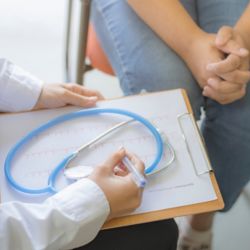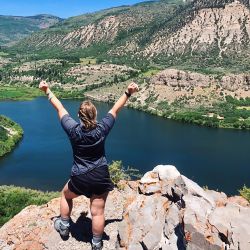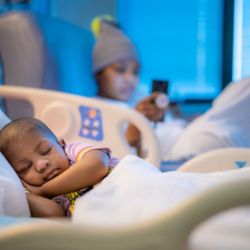Fitness in Childhood Cancer Patients: How to Stay Physically Active During and After Treatment
Is anyone else glad 2020 is over? This past year has been tough for everyone. A global pandemic took over in March. Today, we are still social distancing, wearing face coverings, and canceling social activities. But this is nothing new to you, since childhood cancer patients and families must live this way during treatment.
For the last 10 months, we were told to stay in our homes as much as possible. This made it difficult to fit in any type of physical activity. With the start of 2021, New Year’s resolutions might be on your mind. I’m a firm believer in making positive changes any day of the year, but the start of a new year seems to be the most popular time.
I googled the top 3 New Year’s resolutions and almost every webpage listed losing weight, eating healthier, or exercising as number 1. Since I’m a clinical exercise physiologist, I’m going to focus on exercise. First, it’s important to know there’s a little difference between physical activity, (physical) fitness, and exercise.
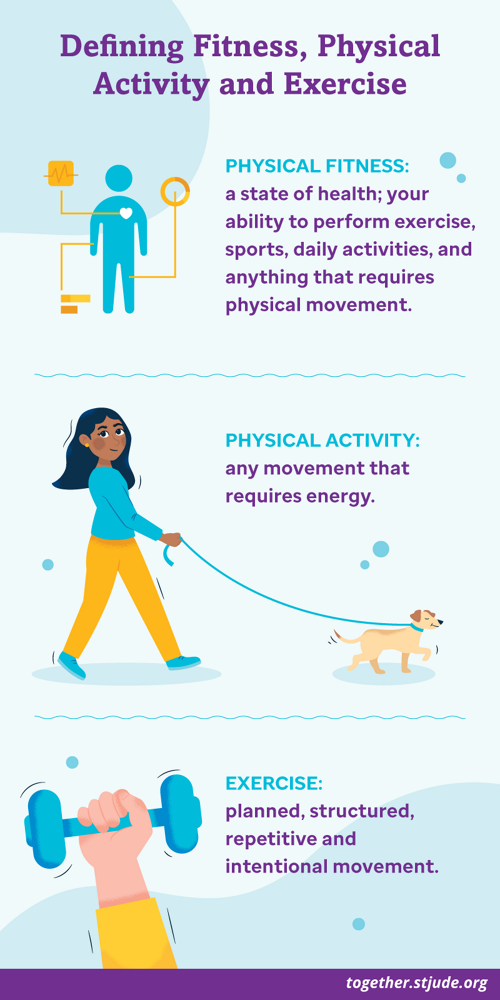
What is the difference between physical activity, physical fitness and exercise?
Defining fitness, physical activity and exercise
- Physical activity is any movement that requires energy.
- Physical fitness is a state of health; your ability to perform exercise, sports, daily activities, and anything that requires physical movement.
- Exercise is planned, structured, and repetitive and intentional movement.
Physical activity looks like playing with your kids or walking the dog while exercise is more like going for a jog or doing a workout video. Physical fitness is how well you’re able to tolerate physical activity and exercise. They are all very similar and many people will use all three words to mean the same thing.
Did you know that over half of childhood cancer survivors do not meet physical activity recommendations? Children going through cancer treatment are less active than kids their age and they never quite catch back up after treatment ends. So how can you help your child be physically active during and after treatment? I’m glad you asked!
1. Get clearance from your child's doctor (and your doctor!)
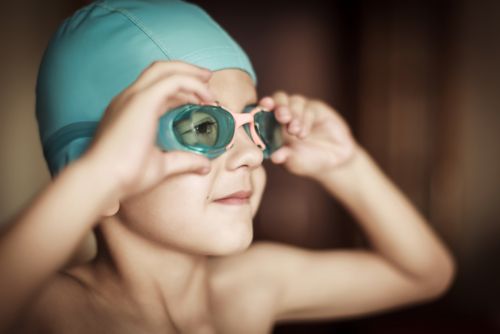
2. Decide what activities sound fun.
3. Be active most days of the week.
4. Rest when appropriate.
Physical activity is very important, but so is rest. Be sure you and your child are resting when necessary. After a tough round of chemo or a long restless night, you both may need a day off to rest. Some days it’s ok to push through the fatigue, particularly when your child feels tired all the time. Other times, physical activity can perk your child up when he or she is feeling extra tired from sitting in clinic rooms all day. Make sure you discuss any concerns about fatigue with your child’s care team.
5. HAVE FUN!
Many people start and quit fitness routines because they hate to exercise. Exercise and physical activity are more than just running or lifting weights (although these are great ways to exercise). My friends and family have been the most successful sticking with their exercise routines when they find something they enjoy doing. Challenge your child to help you try a new physical activity that he or she enjoys doing. Make a playful bet: whoever wins the “game” gets to choose what’s for dinner!
Some of the best memories I have with my family involve physical activity. Swimming during the hot summers and family bowling outings come to mind. Now that I have a young son, I look forward to the times we play outside. Physical activity is not only important for health, but is a great way to connect with your child and create long lasting memories.



